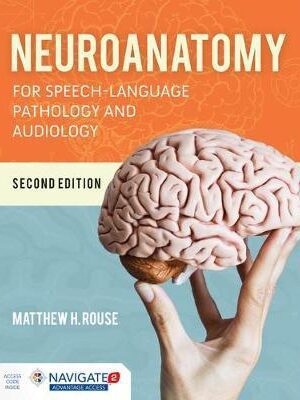Brain Computer Interface: EEG Signal Processing
Brain Computer Interface: EEG Signal Processing 1st Edition:
Brain Computer Interface: EEG Signal Processing discusses electroencephalogram (EEG) signal processing using effective methodology and algorithms. This book provides a basic introduction to EEG and a classification of different components present in EEG. It also helps the reader to understand the scope of processing EEG signals and their associated applications. Further, it covers specific aspects such as epilepsy detection; exploitation of P300 for various applications; design of an EEG acquisition system; and detection of saccade, fix, and blink from EEG and EOG data.
Key Features:
- Explains the basis of brain computer interface and how it can be established using different EEG signal characteristics
- Covers the detailed classification of different types of EEG signals with respect to their physical characteristics
- Explains detection and diagnosis of epileptic seizures from the EEG data of a subject
- Reviews the design and development of a low-cost and robust EEG acquisition system
- Provides mathematical analysis of EEGs, including MATLAB® codes for students to experiment with EEG data
This book is aimed at graduate students and researchers in biomedical, electrical, electronics, communication engineering, healthcare, and cyber physical systems.
Additional ISBNs:
∗ eText ISBN: 1000595528, 978-1000595529, 9781000595529
- See additional information on the Amazon.
More Details
Cover
Half Title
Title Page
Copyright Page
Contents
Preface
Authors
Chapter 1 Introduction
Overview
1.1 The Human Brain
1.2 Anatomy of Human Brain
1.3 Different Brain Lobes and Their Functions
1.4 Functional Overview of Brain
1.4.1 Language and Memory Functions
1.4.2 Deep Structures in the Brain and Their Functions
1.4.3 Memory
1.4.4 Ventricles and Cerebrospinal Fluid
1.5 Brain Cells and Their Communication Mechanism
1.5.1 Nerve Cells
1.6 Neuroimaging Techniques
1.6.1 Electroencephalography (EEG)
1.6.2 Functional Magnetic Resonance Imaging (fMRI)
1.6.3 Computed Tomography (CT)
1.6.4 Positron Emission Tomography (PET)
1.6.5 Magnetoencephalography (MEG)
1.6.6 Near Infrared Spectroscopy (NIRS)
1.7 Comparison of EEG and fMRI
1.8 Electroencephalography (EEG)
1.9 Classification of EEG Signals Based on Frequencies
1.9.1 Delta Waves
1.9.2 Theta Waves
1.9.3 Alpha Waves
1.9.4 Beta Waves
1.9.5 Gamma Waves
1.10 Electrooculography (EOG)
1.11 Applications of EEG
1.11.1 Medical Applications
1.11.2 Commercial Applications
1.12 Brain Computer Interface (BCI)
1.13 Summary
References
Chapter 2 Fundamentals of EEG Signals
2.1 Introduction
2.2 Modeling of EEG Signals
2.3 The General Characteristics of EEG Signals
2.4 Attributes Used in the Classification of EEG Signals
2.4.1 Frequency
2.4.2 Voltage
2.4.3 Morphology
2.4.4 Synchrony
2.4.5 Periodicity
2.5 EEG Signals and Sampling
2.6 Sinusoids in EEGs
2.7 Fourier Transform and Power Spectral Analysis of EEG Signals
2.8 Phase Coupling
2.9 Processing of EEG Signals Using Power Spectral Analysis
2.10 Summary
References
Chapter 3 Signal Processing for EEGs
3.1 Introduction
3.2 Filters for Processing EEG Signals
3.2.1 Band-Pass Filtering
3.2.2 Notch Filter
3.2.3 Continuous Wavelet Transform (CWT)
3.2.3.1 Mallat’s Algorithm
3.2.3.2 Wavelet Families
3.2.4 Baseline Drift Removal
3.2.5 Wavelet Denoising
3.2.6 Median Filtering
3.2.7 Moving Average
3.3 Transformation Methods Used in EEG Signal Processing
3.3.1 Fourier Transformation
3.3.2 Wavelet Transform (WT)
3.3.3 Discrete Cosine Transformation (DCT)
3.3.4 Continuous Wavelet Transformation (CWT)
3.3.5 Discrete Wavelet Transformation (DWT)
3.4 Feature Extraction
3.4.1 Principal Component Analysis (PCA)
3.4.2 Independent Component Analysis (ICA)
3.4.3 Hjorth Parameters
3.5 EEG Signal Classification Techniques
3.5.1 Support Vector Machines (SVMs)
3.5.2 K-Nearest Neighbor (KNN)
3.5.3 Artificial Neural Network (ANN)
3.6 Summary
References
Chapter 4 Software and Hardware for EEG for Capturing and Analysis
Overview
4.1 Introduction
4.2 Overview of an EEG Signal Acquisition System
4.2.1 EEG Signal Enhancement Techniques
4.2.2 Comparison of Feature Extraction Methods
4.2.3 EEG Signal Classification Methods
4.3 EEG Acquisition: Axxonet’s Brain Electro Scan System (BESS)
4.4 Software Requirement for Analyzing EEGs
4.4.1 MATLAB
4.4.1.1 Key Features of MATLAB
4.4.1.2 Functions
4.4.1.3 Data Analysis and Visualization
4.4.1.4 Acquiring Data
4.4.1.5 Analyzing Data
4.4.1.6 Visualizing Data
4.4.1.7 Documenting and Sharing Results
4.4.1.8 Programming and Algorithm Development
4.4.1.9 Application Development and Deployment
4.4.1.10 Designing Graphic User Interface
4.4.1.11 Generating C Code
4.4.1.12 Development Tools
4.4.1.13 Syntax
4.4.1.14 Variables
4.4.1.15 Matrices
4.4.1.16 Structures
4.4.1.17 GUI Programming
4.4.1.18 Applications
4.5 EEGLAB Toolbox
4.5.1 EEGLAB Features
4.5.2 EEGLAB System Requirements
4.6 EDF Browser
4.6.1 EDF Browser Features
4.7 Python
4.7.1 Python Features
4.7.2 Relevant Libraries in Python
4.7.2.1 pyEDFlib
4.7.2.1.1 Documentation
4.7.2.2 NumPy
4.7.2.2.1 Getting Started
4.7.2.2.2 Documentation
4.8 Summary
References
Chapter 5 Protocol and Process of EEG Data Acquisition
Overview
5.1 Introduction
5.2 The Basic Principles of EEG Diagnosis
5.3 The EEG Electrode Placement Systems
5.4 Measurement
5.5 Placement of the EEG Electrodes for Higher-Spatial Resolution
5.5.1 Protocol for EEG Data Acquisition
5.5.2 Basic Protocol: Preparation of Human Subjects for EEG Acquisition
5.5.3 Subjects’ Data Selection
5.5.4 EEG Acquisition Setup Block
5.5.5 Experimental Procedure
5.5.5.1 Recruiting Subjects
5.5.5.2 Before the Experiment
5.5.5.3 During the Experiment
5.6 EOG Data Acquisition
5.7 Summary
References
Chapter 6 Methods to Detect Blink from the EEG Signal
Overview
6.1 Introduction
6.2 Process of EEG Data Acquisition
6.3 EOG Data Acquisition
6.4 Blink Detection
6.5 Results
6.6 Applications
6.7 Summary
References
Chapter 7 Saccade and Fix Detection from EOG Signals
Overview
7.1 Introduction
7.2 Methods
7.2.1 Block Diagram
7.2.2 Baseline Drift Removal
7.2.3 Noise Removal
7.2.4 Median Filtering
7.2.5 Wavelet Denoising
7.2.6 Saccade Detection
7.2.7 Fixation
7.3 Summary
References
Chapter 8 Detection of P300 and Its Applications
8.1 Introduction
8.2 What Is a P300 Artifact in an EEG?
8.3 Characteristics of P300 Waveforms
8.4 How to Generate or Induce a P300
8.5 P300 Detection
8.6 Signal Processing Methods
8.7 Applications of P300 Systems
8.7.1 Smart Home
8.7.2 Internet Use
8.7.3 Painting Tasks
8.7.4 BCI Gaming
8.7.5 Stroke Rehabilitation
8.7.6 Lie Detection
8.7.7 P300 Speller
8.7.7.1 Row/Column (RC) Paradigm
8.7.7.2 Single Character (SC) Paradigm
8.8 Summary
References
Chapter 9 Brain Computer Interface Using P300
9.1 Introduction
9.2 The P300 BCI and Movement
9.2.1 Functioning of the P300 BCI
9.3 P300 Classifier
9.3.1 ERP Analysis
9.4 P300 as BCI
9.5 Advantages of a P300 for BCIs
9.6 Future Uses of a P300 BCI
9.7 Summary
References
Chapter 10 Designing an EEG Acquisition System
10.1 Introduction
10.2 Review of EEG Applications
10.3 Research Problems
10.4 Research Trends
10.5 Proposed Solution
10.6 System Design
10.6.1 Block Diagram
10.6.2 Electrodes
10.6.3 Electrode Placement
10.6.4 Electrode Cap
10.6.5 Instrumentation Amplifier
10.6.6 Microcontroller
10.6.7 Bill of Materials Required to Assemble a EEG Acquisition System
10.7 Testing and Observations
10.8 Results and Discussion
10.9 Conclusion
References
Chapter 11 A Method to Localize the Pupil of the Eye for Point of Gaze Estimation
Overview
11.1 Introduction
11.2 Previous Research on Gaze Estimation
11.2.1 Detection of the Pupil
11.2.2 Obtaining a Point of Gaze from a Pupil Coordinate
11.3 Calibration Sequence
11.4 Case Study and Analysis
11.5 Comparison of Gaze Estimation Method
11.6 Summary
References
Chapter 12 Detection of Epileptic Seizures from EEG Data
Overview
12.1 Introduction
12.2 Present State of the Art
12.3 Classification of EEG Data
12.4 Designing an Automatic Epileptic Seizure Detection System
12.4.1 Materials
12.4.2 Methods
12.4.3 Wavelet Transform
12.5 Summary
References
Appendix
Index































 Dentistry
Dentistry
Reviews
There are no reviews yet.